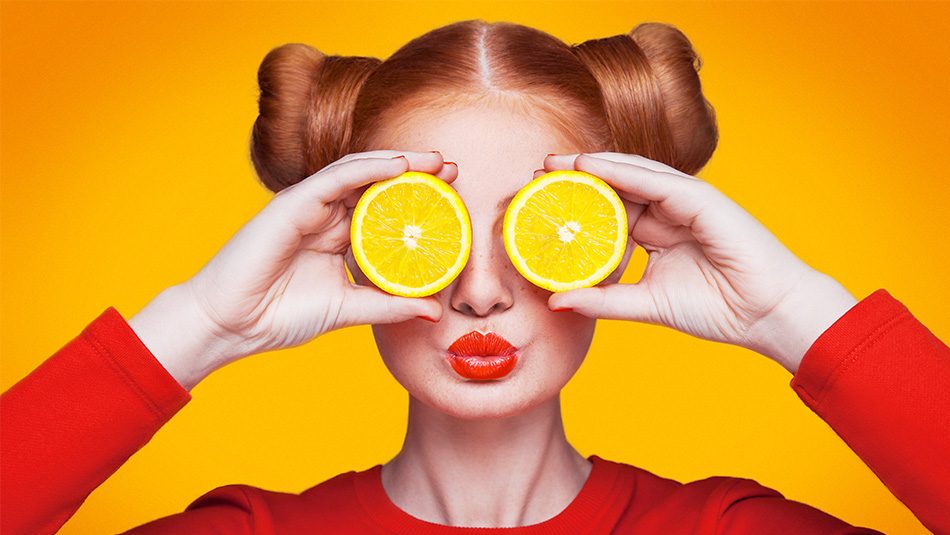
The Collision of Fashion and Food
How do we gain an advantage in what seems like a very unforgiving and competitive marketplace?
As food marketers, we must consider all angles that help separate us from our peers. Sometimes, that means looking past the numbers to better understand the macro trends driving our target customer’s buying decisions. Taking a step beyond the aisles, we see that what our customers put on their bodies says as much about them as what they’re putting into it. With this in mind, an exploration into the intersection between fashion – an industry on the bleeding edge of trends – and food can uncover fresh insights that will potentially help us relate to and better connect with our customers.
For many brands – food or otherwise – business expectations are rising with each turn of the quarter. Manufacturing and production times are being squeezed as speed-to-market dictates seasonal relevance and pressure is at an all-time high to cut cost for improved margins. And, despite the challenging retail landscape, exceeding comp scores QTQ continues to be the benchmark that proves to The Street that the health of your brand is in check. Navigating the growing demands of our shareholders, which are frequently in direct conflict to the demands of our consumers, today’s business leaders must be able to quickly assess the marketplace and create strategies to deliver exactly what their consumers want. All before their competitors beat them to the punch.
Can brand marketers really drive trends or have the reins been turned over to the hands of our consumers?
The fact is, the fastest growing consumer segment is Millennials, now between the ages of 17 and 37. In 2018, they will have more spending power than any other generation1 making them a key target for marketers. This powerhouse of a consumer segment is highly-connected, authentic at all cost, craves uniqueness, and is driven by a strong set of values. The fashion industry, which often operates ahead of mainstream adoption, offers a unique perspective into this customer’s mindset. Closely following fashion cues can help savvy food marketers get ahead of the curve, giving their brands a competitive edge which better enables them to surpass mounting business objectives YoY.
Does fashion have an influence on food trends? Can we predict new usage opportunities that will drive volume and reduce price volatility by examining the pages of Vogue, strolling the beaches of California, or hanging out on the high-street in The Big Apple? If so, it’s likely there are some key takeaways we can quickly apply to improve our forecast and further refine our current plans so we maintain the highest ROIs.
Here are a few of the most interesting fashion trends currently influencing consumers and how they could potentially relate to and inspire food preferences and purchase intent.
Athleisure
When the trend actually started is up for debate. Some say Jane Fonda could have been a catalyst in the early 80’s. Or maybe it was the launch of Lululemon in the late 90’s. More recently Fabletics, an online retailer co-founded by Kate Hudson, made the look affordable to the mainstream while high-end luxury brands like Balenciaga, Dior and Versace continue to progress the look forward from season to season. Whatever the origin, the Athleisure market shows signs of continued growth and is expected to double to $83B in the U.S. by 2020(NPD).
For food marketers, Athleisure is especially compelling as the trend evolved from yoga pants and joggers to a full-blown healthstyle. The Athleisure mindset has inspired consumers to flaunt their healthy choices in all things from boutique fitness classes and high-end active travel destinations to, that’s right, their food choices. Take for instance the growth of Kombucha that, according to Square, has seen sales increase 12-fold in the past three years. Or, the use of cauliflower as a substitute for everything from rice and pizza crust to smoothies. Then there is the use of turmeric and activated charcoal in just about everything from lattes to ice cream. The point is, just like a good pair of leggings, healthy living and wellness are often worn as a symbol of status and food and beverages brands are the perfect accessory. By leveraging the Athleisure trend, food marketers have an opportunity to expand their market share and increase volume by becoming more relevant to already engaged mainstream consumers.
Ugly Is In
When it came to 2017 fashion trends, beauty is in the eyes of the beholder never rang more true. What started about three years ago with the onset of Normcore, the anti-fashion movement has now overtaken the fashion industry with the most outlandish and ugliest fashion concepts stealing the show this past year. As fashion houses and brands continued to revolt against “basic”, we witnessed the introduction of designer Crocs and RompHims and the resurgence of Teva Sandals, Mom Jeans and fanny packs. And, then there was denim which went from aggressively distressed to denim disasters (as some would say) like the Vetements’ $1,621 reworked full-zip Levis or the “thong jean” by Thibaut, a Japanese label. In 2017, the more unconventional the style, the more popular the look. And, it’s all paying off. A healthy percentage of fashion labels playing into this mindset hit record sales and reached rock star status when it came to market relevance.
Words like ugly, odd, and bizarre seem like they shouldn’t be appealing when it comes to food. Perhaps by way of complimenting the mindset of the Normcore and Ugly movement, edible insets, unicorn drinks, pickle cupcakes, and ugly or imperfect produce was all the rage as consumers ditched generic and sought out niche, specialty offerings. While big brands are still dominating the food and beverage industry at 63% share, down from 66% in 2012, this pivot from mainstream has some big brands like Hershey taking action. Pricing wars are certainly a factor in the decline but, we also know this consumer is craving unique, simple and wholesome food options. Convenience is important but, ingredients are king – and real, fresh ones (pulled together in fun, new ways – think Sushi Burgers) are equating to big dollars and driving demand. Just as consumers want to explore, discover and purchase new fashion fixes, they also want to discover (and rediscover) new foods that not only meet their standards but also say something about their personal taste. Smaller, more nimble brands are positioned well to quickly find footing as “endless aisle” expands the consumer’s options beyond the traditional grocery store while big brands are looking for ways to innovate their current offering in order to maintain their market share. New M&A’s like Campbell’s Soup and Pacific Foods or Hershey and Amplify speak well to how big food brands are working to stay relevant in a marketplace where niche is driving volume.
Making a Statement
There is a long-standing history with fashion and politics. From pushing societal norms and fighting for women’s and worker’s rights to animal welfare and the support of environmental regulation. Perhaps more direct than ever before, this past year’s runways from Fashion Week to the Red Carpets have proven to be very powerful stages for influencing and progressing cultural change through the art of fashion. A recent study by Sprout Social further demonstrates that consumers want brands to have a position on social and political issues (eMarketer). And, there is a long list of those using the fashion stage in 2017 to take a stand.
Consumers not only want to be heard, they expect it and they support brands that are responding to their feedback. To leverage this moment, food marketers have an opportunity to align with the values important to their consumers by elevating their brand message beyond the product itself. We’re seeing consumers respond as food trends like no-waste cooking, plant-based eating, the rise of transitional organic and support of women and minority run businesses on the rise. Food brands can easily join these conversations but must do so in an authentic way or they may find themselves in the crossfire as Kendall Jenner and Pepsi did this past year.
Whether you’re personally engaged with the latest fashion trends or not, your personal style – whatever it is – tells the world a lot about your preferences. For those that identify with this perspective, the latest fashion trends can offer a glimpse into the mindset of today’s largest consumer segment and potential uncover marketing opportunities. So, as we look at the predicted spring/summer 2018 fashion trends like Americana and Utilitarian or bright, saturated hues and satin, what can we gleam about the state of our customers and where they may be inclined to spend their dollars this next season? For starters, with the Americana trend on the horizon, will we see an increased support of local brands and buying? Will foods tied to American history like apple pie, Jello, and hot dogs be reinvented and have a moment in the spotlight? In the highly-competitive and crowded food market where success is so closely tied to maintaining strong brand relevance, fashion may indeed be another predictor food marketers can leverage to gain traction and stay ahead of the curve.






